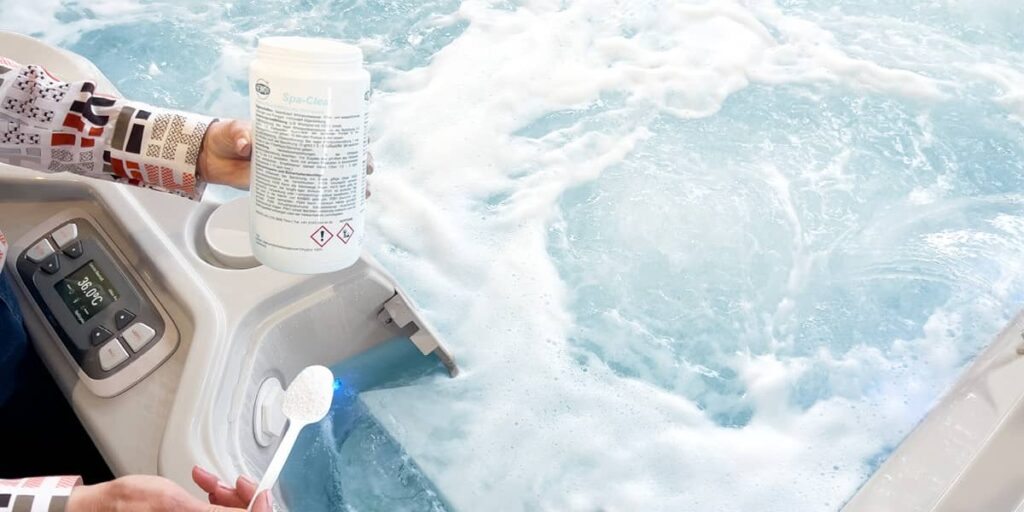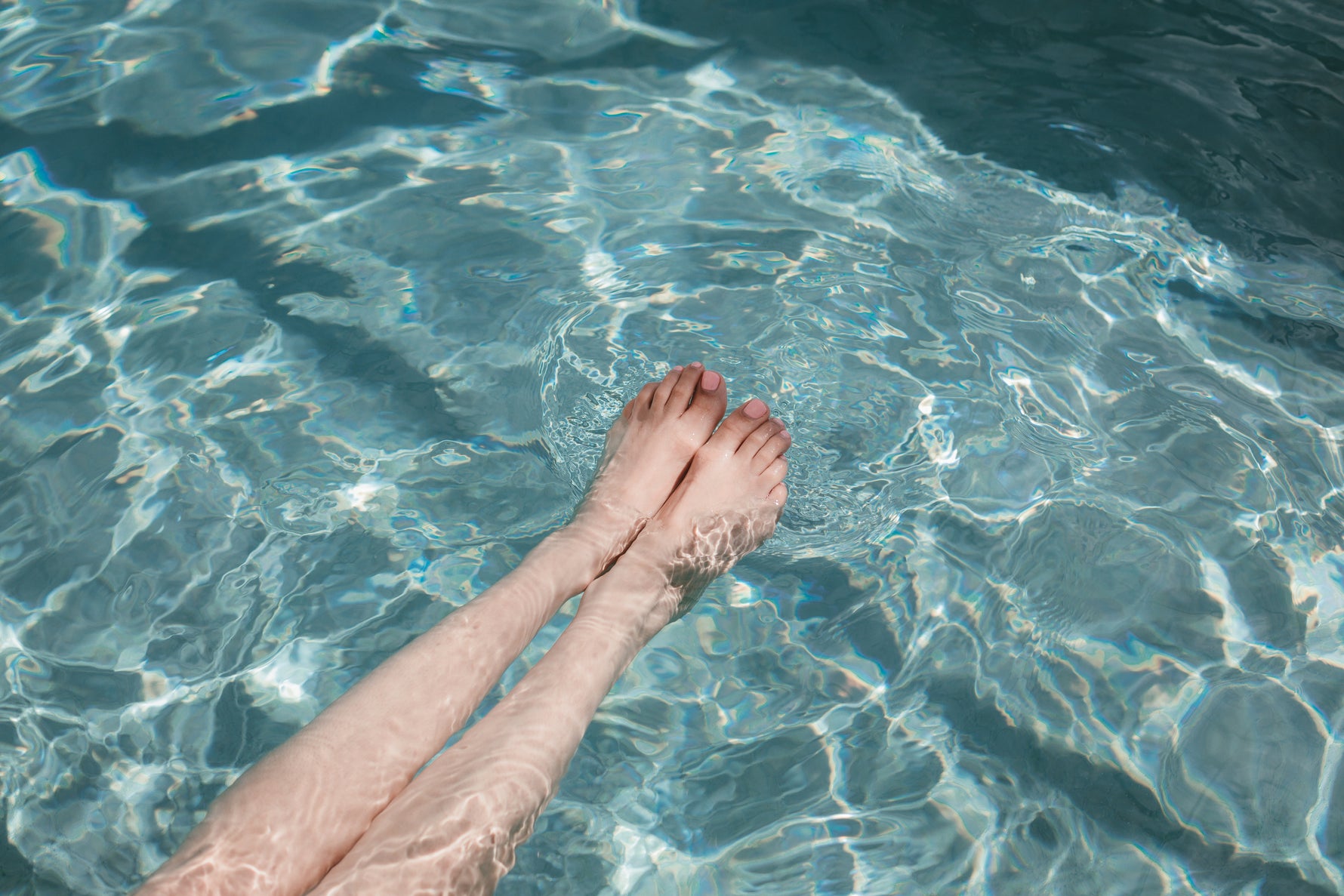
Are Hot Tub Chemicals Dangerous?
Hot tubs are a great way to relax and unwind, especially after a long day, but hot tub chemicals are also essential for keeping hot tub water clean and safe. These chemicals play an important role, but if they’re misused or not stored properly, they can cause more harm than good. You’ll usually find hot tub chemicals like chlorine, bromine, pH balancers, clarifiers, and shock products used to keep hot tub water clean.
Some common side effects include irritated skin, shortness of breath, and other health concerns, especially if the chemicals aren’t handled properly. In some cases, it can cause long-term side effects as well, so it’s very important to be cautious and know what you are doing when handling chemicals, not just for you, but for the safety of your family and guests too.
Overview of hot tub chemicals and why they are necessary
Hot tub chemicals are essential for keeping your hot tub clean. They help make sure the water stays clean, clear, and safe to use. Without hot tub chemicals, bacteria and other microorganisms can quickly grow, which makes the water unsafe to soak in. Untreated water often turns cloudy or murky, which also puts a damper on relaxing soak time.
And let’s be real, nobody wants to step into cloudy or murky water. It definitely kills the relaxing vibe. Hot tub chemicals might not smell great or seem glamorous, but they keep your hot tub safe and clean.
Different Types of Hot Tub Chemicals
When it comes to keeping your hot tub in good shape, there are a handful of chemicals you’ll want to get familiar with. The most common hot tub chemicals you’ll hear most often are chlorine, bromine, pH balancers, alkalinity increasers and calcium hardness increasers.
Chlorine is the classic go-to. It’s very effective at killing bacteria and all those tiny germs. The downside? It has that unmistakable smell that some people find a bit harsh and can cause side effects such as red or watery eyes, coughing, or respiratory issues.
That’s where bromine steps in. Bromine does the same job as chlorine but without the strong chemical scent. So if you’re sensitive to smells or just want something a bit gentler, then bromine might be a better option.
pH balancers are definitely important as well. Keeping the pH levels balanced not only helps avoid itchy skin but also protects your hot tub from damage. When the water is too soft or too hard, it can cause problems. Soft water tends to be corrosive and can eat away at your hot tub parts. Hard water, on the other hand, can lead to buildup and scale, which clogs pipes and makes the water cloudy. So, keeping that balance right keeps both you and your tub happy.
Calcium hardness increasers sound technical, but all they do is boost calcium levels in your water. Why? Because low calcium can lead to corrosion inside your hot tub, and that’s a headache nobody wants.
Alkalinity increasers are used to raise hot tub alkalinity levels, which helps hot tub users avoid hot tub-related issues such as cloudy hot tub water.
There are other hot tub chemicals out there, but these are the basics that pretty much every hot tub owner needs to use.
Potential risks of hot tub chemicals
All these chemicals are safe to use as long as you follow the instructions carefully. That’s why it’s really important to read the labels and instructions before handling them. It’s also important to know how much to use, when to add it, and how long to wait before getting back in the water. You should always make sure you store your hot tub chemicals somewhere safe and out of reach of kids and pets.
However, there are potential risks that hot tub users may face when using hot tub chemicals incorrectly. Some of these risks include skin irritation, breathing difficulties, and even hot tub-related illnesses like Legionnaires' disease or hot tub folliculitis.
Let’s say you’re using chlorine to sanitize your hot tub, which is a pretty common choice. Chlorine works by oxidizing contaminants, which is just a fancy way of saying it breaks down bacteria and other tiny organisms by tearing them apart from the inside, so it’s pretty effective to say the least.
But here’s what a lot of people don’t realize. As chlorine does its job, it breaks down too. What’s left behind are chloramines, which are basically chlorine’s “leftovers.” And guess what? That strong chlorine smell people often associate with clean water? It’s actually from those leftover chloramines, not fresh chlorine.
Now, if you don’t stay on top of things and just let the chloramines hang around, they’ll start to build up. And that’s a problem. The more they build, the less active chlorine you’ve got in the water doing the real sanitizing work. Which means bacteria and algae can start creeping back in, and before you know it, the water that seemed fine isn’t so fine anymore. That can lead to skin and eye irritation. Sometimes, if the chloramines linger in the humid air, it can cause breathing difficulty. People with asthma are at a higher risk of having an asthma attack as well.
To avoid this, you’ll need to add chlorine regularly or shock your hot tub. That keeps the sanitizer levels up and the chloramines in check, so your hot tub stays clean, safe, and actually relaxing.
Safety steps when handling hot tub chemicals
In order to ensure hot tubs are safe for use and hot tub users avoid any potential risks of hot tub chemicals, here are some safety steps that should be taken:
- Always follow the manufacturer’s instructions and safety precautions when handling hot tub chemicals and use protective gear, such as gloves, goggles and a face mask.
- Store hot tub chemicals in a safe area, away from children and pets.
- Continually test your water. 3-4x a week at least. To ensure that your sanitizer, pH, alkalinity, and calcium levels are all balanced and normal.
- Shock your hot tub once a week or as needed to keep chloramines at bay and prevent hot tub-related illnesses.

So, are hot tub chemicals dangerous? Well, they can be, but only if you’re careless. When hot tub chemicals are used properly, they’re just tools to keep your water clean and safe. Handling chemicals may sound intimidating, but all you need to do is read and follow the labels, wear protective gear, store them safely and out of reach, and keep up with testing. With a little care and attention, hot tub chemicals help make sure your soak stays relaxing, safe, and worry-free.
Share



